“Eve’s attendants, immortal children, far from Hesperian glades you are flown, Elf Lords watching over Faery fountains, tending tree, leaf, and grove, Sing the hymn of Eden in the morning, make ready the wood for sunrise, set all the earth in proper motion, Watching over your Lady’s children, though we speak not.”
Originally, this entry of my mythology series was going to cover the archetype of the enchanted forest, as a part two to the discussion on the Mirkwood archetype.
I did not plan on it becoming a discussion of Eden.
I was going to make a small note about how the enchanted forest acts as a sort of echo of Eden, an outpost of paradise. But as I delved further into this idea it eventually became the bulk of the essay and required a re-write.
It began to become clear to me that all the enchanted forests and sacred groves found in our myths (“Lorien” from LOTR for example) are just smaller Edens, echoes of “Faerie”.
Carrying this idea further, I realized that the garden of Eden actually is, in essence, the realm of “Faerie” that I’ve spoken of before, the “Perilous Realm” that this whole series is talking about. At least, Eden contains all of its “good” regions. It does not contain the regions of hell and fire of course, but it is “Fairyland” as Tolkien and other English authors would call it, the realm of elves and gods. So this article is really a meta post for this series, as I believe in Eden we can find where all the enchanted places of our world have their origin.
To tie together Biblical myths with European ones, the find a place where Faerie and Zion meet is something men like Tolkien have been doing for generations. It's something I’m passionate about doing. I think there is no better way to do this than to demonstrate that memories of elven kingdoms and European holy mountains are all found in Eden.
In Eden we find Olympus, the world tree, the rainbow bridge, Hyperborea, the apples of immortality, and all manner of elves and gods- in addition to our birthplace.
This connection was made more evident to me recently when I heard my priest told me that the church sanctuary (a sort of indoor “sacred grove”) is meant to represent the garden of Eden, and that the garden’s tree of life has ties to the cross.
Our sanctuary’s are little Eden’s, and our enchanted forests and sacred groves are little Fairylands- and I think they are all the same thing.
So to organize this essay, I’ll go through aspects of the Garden of Eden itself, and then show how it connects to other mythologies, the imagery of Faerie, and the archetype of sacred groves and enchanted forests. I’ll then go over some ideas that are unique to the “outposts” of Eden, the enchanted forests themselves.
By doing this, I hope to coherently demonstrate that Eden, Fairyland, Valinor, Asgard, Olympus, etc are all the one and the same.
The Lost Realm:
It may seem trite to start with the question “what and where is the garden of Eden”, but I think it’s important to go over. Mostly because in our day and age, it like so many others things in Christian cosmology has been reduced to a very simple conception.
Of course, it contains the things you saw in Sunday school. It is the birthplace of mankind, the garden where we fell from grace. Green pastures, fruit trees, animals everywhere, etc.
But it isn’t just a garden.
Eden is an entire realm, a “garden” in the sense that it’s consecrated and set apart from the rest of the world. The earthly sacred groves we’ll talk about later are usually situated somewhere inside the larger dark forest, Mirkwood. The garden of Eden fills this role in a more primordial way, as the singular paradise in the center of an entire fallen world of darkness.
Placing the garden on a map is more difficult, but we can use one of its defining features to try and do so.
Most Christian (and Jewish) traditions once understood it as a place on a mountain (God’s mountain), at the center of the world- holy tributary rivers flow down from it, and there is something like a world tree or tree of life at the center. Those are the defining features in a nutshell. Other traditions like the Norse or Greek share many of these ideas.
While the location of the garden is heavily debated, I will just get out of the way the idea that we “know” that it was in the middle east, where the modern day Tigris and Euphrates are, because “the Bible says so”. It’s not that simple.
The location of Eden has thousands of years of debate behind it, and like the flood, only recently has a dogmatic surface level reading of the text been considered the norm. And beyond the Jewish and Christian traditions, other traditions share an almost identical description of the holy garden, but place it elsewhere.
Many cultures share the idea of four rivers flowing down from the holy mountain. It’s in the Abrahamic tradition yes, but also in Mesopotamia and even Indian mythology. Indian cosmology shares a version of this, where from the holy mountain Meru the world is split into four continents.
You can read more about this here, but the takeaway point is that cultures all over the world have agreed on this general cosmology for the primordial garden at the center of the world.
These cultures have also simply identified the four holy rivers with rivers local to them. Understandable yes, but not useful if we want to figure out what Genesis is really talking about.
And more importantly, the Middle-East location doesn’t work well for the symbolism of the garden. The garden is supposed to be at the center of the world, as the world tree and holy mountain are essentially placed at the center of the world. Christian tradition has always taught this, that the garden is at the center and the four holy rivers flow down and out of it, marking the quadrants of the world.
There’s only one place on Earth where this really makes sense to me, where you can place this primordial paradise.
I’m partial to the idea that the garden of Eden was (is) located at the true center of the Earth, the North Pole.
Here, we have to (get to) connect Eden to Hyperborea.
Hyperborea itself deserves its own post, because I believe there is more than one location that share this name. For the most part, I think the Greek stories (and other cultures’ tales) of an Indo-European race are speaking of a historical ancient civilization somewhere in Northwestern Europe, perhaps Doggerland- but not the North Pole.
However, other traditions, especially more modern ones, I think are talking about a different, more primordial place. It’s this version of Hyperborea that we can connect to Eden.
This version began to pop up in the early days of map-making, when the supposed continent at the North Pole began to be placed on maps and labeled with names like Hyperborei. I won’t clutter this article with countless screenshots, but you should go look up Arctic maps from the 1500-1600’s.
Gerardus Mercator drew the above map of the arctic. The “Rupus Nigra et Altissima”, or “Black, Very High Cliff” at the center of his map is assumed to be a mountain at the pole, and it was a common belief of Mercator’s age that the pole itself was actually magnetic mountain.
In many other old maps, the arctic continent is referred to as the Hyperborean continent.
In all of these maps you will see the general layout of a four-island archipelago separated by four great canals or rivers, with a great rock or mountain at the center.
It’s a common suggestion that the four rivers flowing out of the garden in the book of Genesis and other traditions are represented here by the four rivers drawn flowing out of the North Pole. The vision of Hyperborea, a northern paradise populated by a golden, un-fallen race can be interpreted as memory of the Biblical paradise. Its golden haired and fair skinned inhabitants are also sometimes refereed to as elves or minor gods (such as the Aesir and Vanir from Norse myth), tying it in to tales of Fairyland such as Tolkien’s Valinor, which is inhabited by the Vanyar or the “fair elves”. As of course, if anyone still lives in Eden, they could not be men, but perhaps our divine cousins.
It’s this arctic version of Hyperborea that is usually disussed in esoteric traditions as well (such as Theosophy), where it is a primordial land at the pole, usually said to be the birthplace of humanity. The Hyperboreran “root race” these tradition say has its home there. is connected to the Greek mythological “Golden Age”, when humans were said to be perfect and sinless. Already the connections to Eden as well as Faerie should be apparent.
However, the North Pole location for Eden shares an issue with placing it in Mesopotamia- that is, it isn’t there.
Sundered from the world:
Our longing for paradise, for Eden, brings up another point- that Eden is missing and we cannot go back.
If you sail to the North Pole today, you won’t see much of anything but floating ice. (You won’t find the Holy Garden looking in the Middle East either if you care to look there).
However, this is actually not a point against my theory. It is actually to be expected. After the fall, the garden was “sundered” from mankind. We cannot simply travel to Eden, much in the same way that in myth not just anyone can stumble upon the enchanted forest.
This brings up an interesting question of in what way we were “removed” from paradise when Adam and Eve were thrust out of the gate and forced to “descend” from the holy mountain. Was it as simple as walking out of a garden? Or was Eden literally removed from the boundaries of our world?
Tolkien certainly thought so, and man’s “sundering” from Faerie and enchantment is something he long wrote on and brooded over. He attempted to explain this separation with his elven paradise of Valinor. Eru (God) literally removes the sacred land from the circles of the world, so that humans sailing for it would simply encounter empty waters if they tried to sail there. However, elves and others among the blessed are granted passage along the “straight way”, which allows them to sail to Valinor. Valinor, once an accessible continent, becomes Fairyland, a place of myth beyond human reach.
We see this in other traditions as well. In Norse myth, Asgard is its own realm on the world tree apart from Midgard, and in Greek myth, the true Olympus was actually usually thought to be another realm as well (despite there being a real Mt. Olympus in Greece).
The consensus appears to be among all traditions that we have truly been barred from the realm of paradise, to the point that it is not even accessible to us unless granted passage by some divine blessing. The idea that “you can’t go back to Eden” is a literal one, it’s not just that we can’t find it. It isn’t only guarded by angels, it’s removed from our dimension itself. This idea also makes concepts like the Bifrost from Norse mythology more interesting- what sort of bridge can take you across dimensions from Earth to the land of the gods?
The Great Wall:
The garden of Eden is also said to be “walled”, with specific entrances and exits. In Genesis, Adam and Eve are specifically thrust out of the eastern gate, seen here in a painting by Thomas Cole:
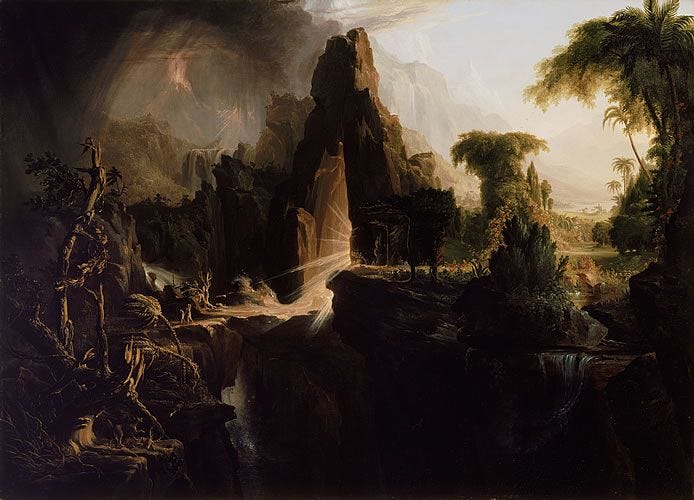
The idea of Faerie being walled is seen everywhere, always specifically to keep out demonic powers.
From this comes the common appearance in myth of a sacred “hedge” or something similar that separates sacred groves and enchanted forests from the human world.
When talking of “Faerie”, one of its primary characteristics is that it is sundered from us, mysterious and unreachable.
Tolkien’s Eden equivalent, the undying lands of Valinor, are barricaded by a great mountain range erected by the Valar to keep out Tolkien’s Satan equivalent, Melkor. (Tolkien’s Valinor is not the birthplace of humanity, but in all other aspects it fills the role of Eden/Faerieland).
In Norse myth, Asgard is also surrounded by a great barrier, this one built by a Jotun(giant) hired by the Aesir. Olympus was said to be heavily fortified as well.
This plays into Milton's Paradise Lost in a big way, where Lucifer’s entrance to Eden is presented as a feat. To get past the walls of Asgard and all its guards is not an easy task.
An idea I like to play around with ties into the fact that Eden is now sundered from our “realm”. With this in mind, we would not expect to be able to find the walls or mountains of Eden (or Asgard) no matter how far we looked.
Specifically, even though I like the North Pole theory, we can’t expect to walk up to the gate there either.
I like to imagine that the Aurora Borelais (the Northern Lights) that surround the Arctic circle are what’s left of this barrier, the great defensive mountain range of Faerie. Far out of reach to us mortals that enter the circles of the North, but still ethereally beautiful. Perhaps some blessed individual or hero sailing beyond the Northern Lights would encounter not shifting ice, but a paradise, or at least could come to the guarded gates by way of the Bifrost.
The Bifrost deserves more mention on this point. Although commonly imaged simply as a “rainbow bridge”, it’s a bit more than that. Its description, in my opinion, sounds more like the Northern lights than a regular rainbow. Some scholars have proposed that its name means things like “shimmering path” or “swaying road to heaven”.
"Yea Faerie now to men is sundered, Woden One-Eyed is named it’s lord, Thunor holds the bridge with thunder, And Tyr stands guard with flaming sword."
The Holy Mountain:
Separate from the idea of the great hedge or defensive mountain range surrounding Eden is the singular Holy Mountain at its center, at the center of the world.
Zion. The white mountain of the gods. The Elf-kings hall.
This seems to be a lesser known feature of biblical Eden, since we focus on the garden aspect. However, the Holy Mountain is the most important place in Eden, because this is God’s citadel on Earth.
It’s a common tradition in Christianity and Judaism to say that the garden of Eden itself, where man was born, was located on the slopes of the holy mountain.
This changes the normal conception of Eden. Usually we think of it as a place God made only for man, and then “went” there to create us. However when viewed in full mythic context, it's more as if God created us in his own personal walking garden, at the foot of his castle. Perhaps it was our destiny to ascend into our father’s house rather than descend out of Eden in shame.
"I see the fire that we have brought forth:
A grimness so cold yet it promised great warmth.
Elite we're no longer, ran off the court.
Fate, we'll pretend we're still one with the source.
Eden might as well burn if it's not promised back,
trees lit up as incense, harkening our past.
God grant us something, he'll do as You ask,
and I'll follow him down this rugged, raw path."
- Chase McBrideOf course, it it not only Christians that remember a glimpse of the holy mount.
To the Germanics it was Asgard, the mead hall of the Aesir. To the Greeks, Olympus. In India, Meru.
The realm of Faerie contains this mount as well.
Tolkien’s version of Eden, Valinor, contains Taniquetil (picture above), the home of the king and queen of his pantheon of gods, where they are served by the light elves. From its peaks, Lord Manwe watches over the entire earth, seeing and hearing all things with the aid of his eagles much as Zeus or Odin did. Here Tolkien tied together Germanic myth with Fairyland, a place where gods and elves live in harmony.
Some common ideas surrounding the Holy Mountain across cultures is that it is magnetic and/or magical, the tallest in existence, God’s dwelling place (and of his heavenly court), and at the center of the universe in a multi-dimensional sense, as well as being at the geographic center of Earth.
Whatever you call this enchanted mountain, it is the peak we are all journeying towards.
The World Tree:
The garden also contains the tree of life. It seems apparent that this tree of life at the center of the garden (and at the center of the world) is the same “world-tree” found in the Germanic tradition. In fact, the belief in a world tree at the center of the world is even more widespread than the holy mountain archetype. It is found from Europe to Africa to Asia and the Americas.
The Biblical account pays more attention to the Tree of the knowledge of good and evil. But it is the Tree of Life with more primordial significance.
Where the Holy Mountain is God’s abode, the Tree of Life is also located at the center of the world and represents the order and harmony of the universe.
From Paradise Found [1885]:
“The Tree of Life, The middle tree, and highest there that grew.”—Milton
This tree is sometimes seen as the source of all the realms and all life, the “root” that all other being sprang from.
In Jewish mythology the Tree of Life or the "tree of souls" produces new souls, which fall into the Treasury of Souls. The Angel Gabriel reaches into the treasury and takes out the first soul that comes into his hand. Then Lailah, the Angel of Conception, watches over the embryo until it is born
Every culture on Earth has some form of this myth of the great world tree, and that tradition is actually carried on in Christianity through the cross, which has in some mysterious way replaced the tree. Put briefly, the ancient tree of life was the symbol of life for Adamic man, whereas the cross, in some mystic sense made out of the tree of life, has become the new symbol of life post-Christ.
We find these sacred trees in Faerie as well. Tolkien portrayed them best with the two light giving trees of Valinor, the precursors to the Sun and Moon, which were marred and destroyed by Satan (obvious parallel to Satan entering and marring Eden). Even in more modern fiction like the Legend of Zelda or Avatar you’ll find the archetype of the life-giving primordial tree.
The Gardens:
Of course, we can’t forget the actual garden in the Garden of Eden.
God’s garden, an agrarian paradise, where man was born and walked with God. Myth has no shortage of examples of this place. It’s in these fields and meadows surrounding the holy mountain that we get more connections to Faerie, as it was these lands that Tolkien imagined being the domain of the elves- the dryads and naiads who’s job it is to keep up God’s gardens.
While separate from the great world tree, paradise if usually said to be filled with many sacred groves and trees, holding fruits like the apples of immortality. Probably the most iconic of these is the garden of the Heperides, the garden that grew golden apples tended by the daughters of the Titan Atlas.
Tolkien mentions it as the gardens of Yavanna, the goddess of all that grows.
C.S. Lewis uses the golden apple archetype in the Magician’s Nephew, where Digory heals his sick mother with an apple from a sacred Narnian grove.
Imagine it, Edenic gardens where Tolkien’s elves tend to the trees and flowers, where the gods of Olympus and Asgard ride by on their chariots, where Christ himself walks in the evenings and the Sun never sets.
Home of the Elves:
Eden, when understood as not only our birthplace but also the realm of “Faerie” is also the home of all elves, lesser deities, and nature spirits.
One ancient tradition from Scandinavia says that “elves” are children of Eve that she hid from God (because they were unwashed), resulting in them becoming a sort of in-between entity, not full human or fully spirit. It could perhaps be interpreted that these children still dwell in Eden.
But this is the connection I love so much, that all the elves and nature spirits of myth and folklore are not demons as some have said, but are children of Eve just as we are. Our sundered cousins. This is where religion meets the enchanted.
Connecting the Biblical idea that the garden is on the lower levels of the Holy Mountain, in Norse mythology the realm of the elves is sometimes not actually separate from Asgard, but said to simply be in the lower country around the holy mountain.
We see this in Tolkien as well- the Holy Mountain is the home of the king of the gods, but the elves dwell throughout the all the rest of the land of Valinor. They tend its gardens, build beautiful cities, and spend the endless ages in bliss.
Through this connection of Eden and Faerie, we can imagine Eden not as an empty garden, but as a realm that Adam and Eve found in a state more akin to C.S. Lewis’ Narnia, home to all manner of races and characters from legend. Eden must be big enough for men, elves, and all others to live under the shadows of God’s mountain.
Outposts of Eden- the Enchanted Forests:
Finally, we’ve come to the original point of this article, which is the archetype of the enchanted wood, probably the most instantly recognizable location in all myth and folklore. What good story doesn’t have an enchanted wood, or a number of them?
The place where we find elves, where heroes go on mystic quests, where druids performed ancient rites, where maidens flee for refuge. An enchanted forest can be anything and anywhere really, as long as some enchanted folk or power dwells there.
Ironically though, these enchanted forests are not in the any of the realms of Faerie at all, but in our own. I think they are best described as “outposts” of Eden, much as how a priest told me that modern church sanctuaries are little Edens.
The archetype of the enchanted elven forest contains all that we’ve already spoken of, only smaller.
They are small refuges in the midst of the black of Mirkwood. They often use magic “hedges” to keep out men and devils. Their center point is often a great mound or a sacred tree. They are the home of elves, nature spirits, woodland gods. Though they are not God’s mountain, they are often sacred groves, places of worship where God’s presence is said to be particularly strong
I don’t think anyone understood this better than Tolkien.
Tolkien’s Elven kingdoms- Lothlorien, Doriath, Rivendell, etc, are conceived as outposts of the Valar who have not gone home to Valinor, their Eden. They are not the “true” Faeire in the High West, but they are an echo of it. The elves that dwell in these ancient woods use their power to turn their dwellings into small Valinors, dells and valleys where their power can thrive, places where death and decay can be kept at bay. To step into Lothlorien feels to the Hobbits like they had stepped into Valinor itself. Even the trees of Lothlorien are trees transported from across the sea, a piece of Faerie.
And this is always the experience of men in folktales that find their way into an enchanted wood. They may not have made it to Eden, but they get a taste of it. They get a taste of a land of enchantment and romance, adventure and high beauty. When an Arthurian night rode through Mirkwood (an outpost of Hell) and found some sacred grove, in some sense he had discovered Eden.
But these enchanted forests are enchanted not because they are in Faerie, but because a piece of Faerie dwells in them. In Tolkien it is the elven rings, in the Legend of Zelda it is the sword of evil’s bane, in a Germanic sacred grove it may be an ancient stone ring. A church may not be paradise, but God’s presence sanctifies it. These sacred groves where Druids once tried to connect with God are truly places where our sundering from Faerie is not so final.
When we, or those in our myths experience the enchanted in these forests, we are not experiencing something foreign to us. Things that are foreign elicit only fear and disgust, or perhaps morbid curiosity. But universally the feeling among the creators and lovers of European art and story has always been one of longing- we long for tales of Elven forests, or wildwoods, of Asgard, of Eden… because we long for home.
And just as the Hobbits found a piece of Valinor in Lothlorein, and European children caught a glimpse of Fairyland in Mirkwood, we too can find a remnant of Eden in sacred groves, both in the wildwoods and within the cathedral’s sanctum walls.
Thank you all for reading. This may be the culmination of the Perilous Realm series, though it may have more to say. The enchanted always does.
If you enjoy my writing, please consider becoming a Patron below.
God Bless.



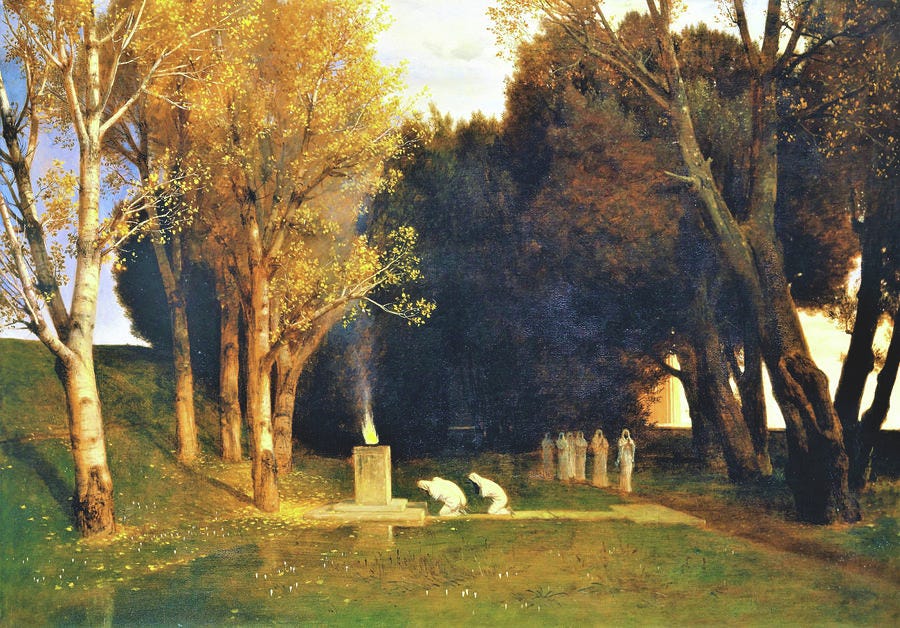
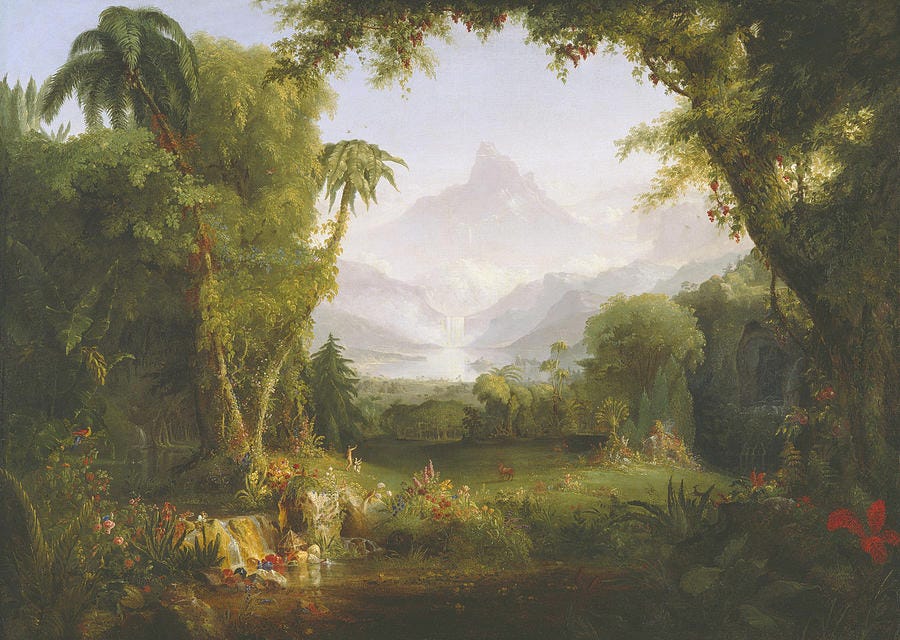
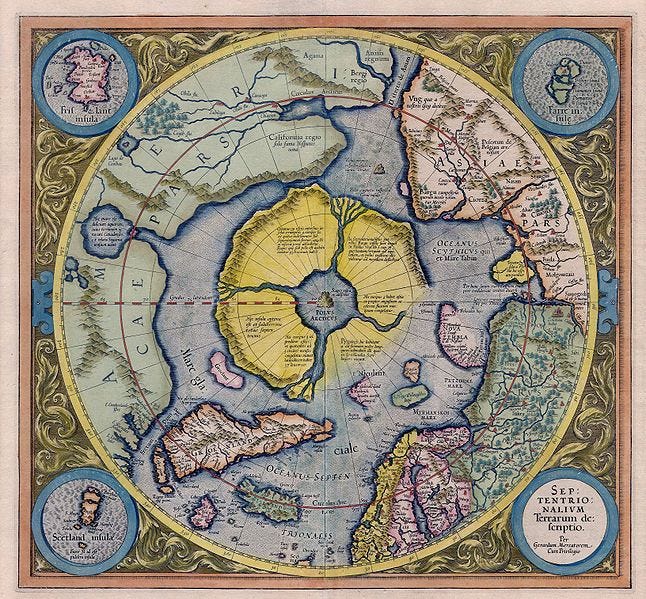
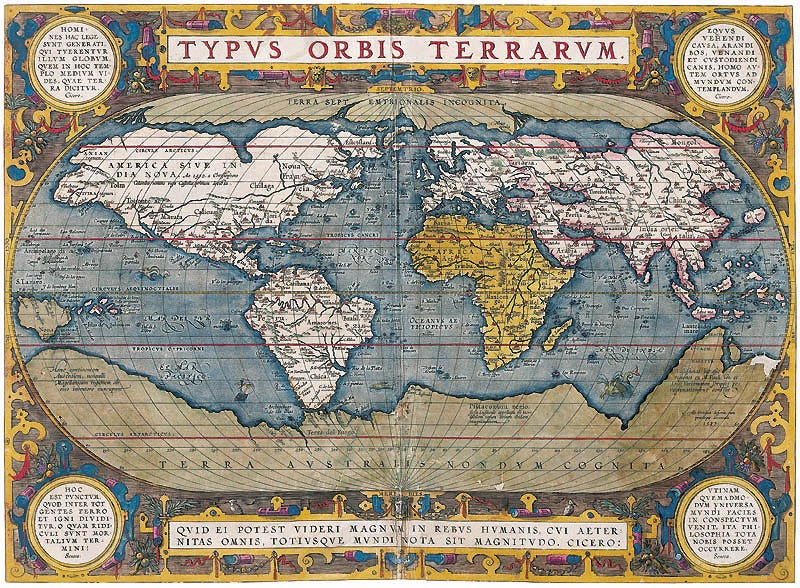

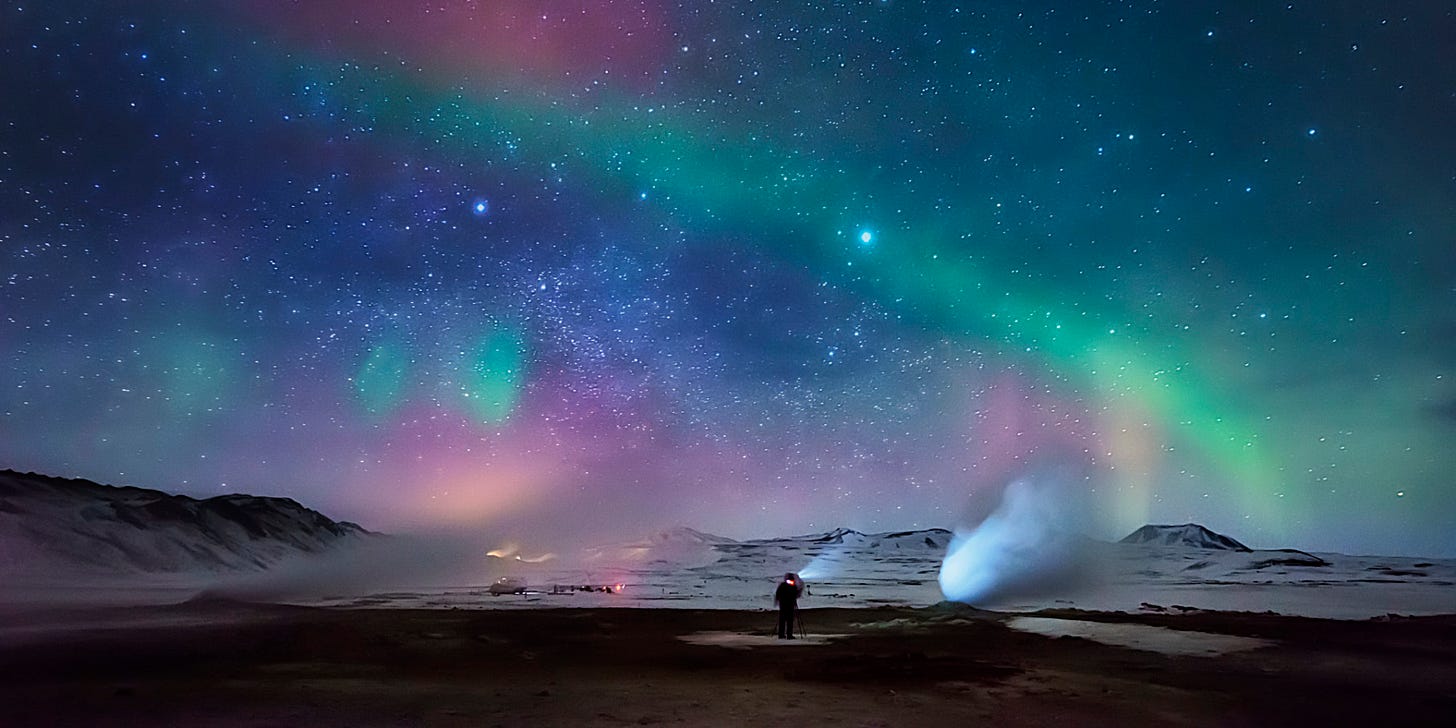
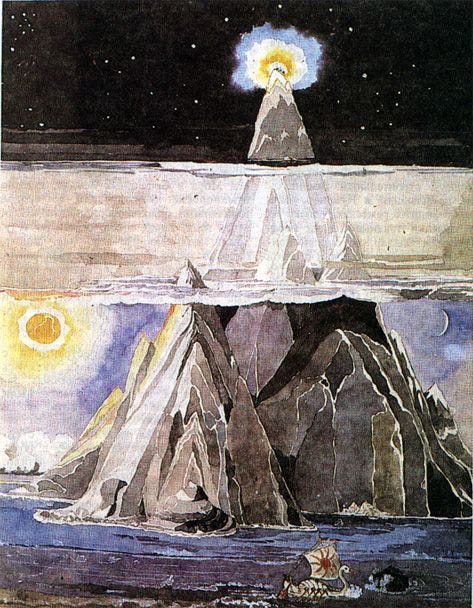
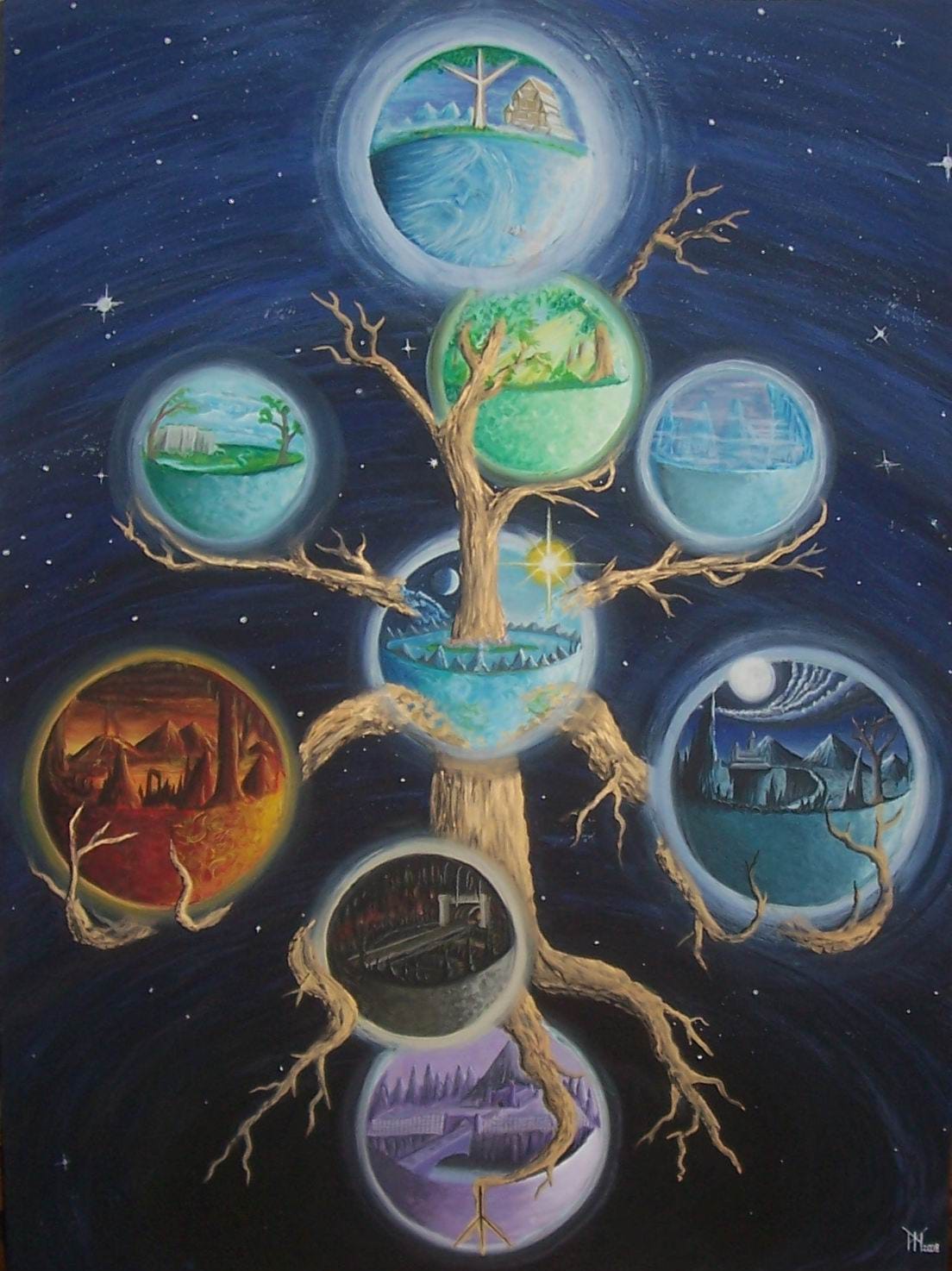
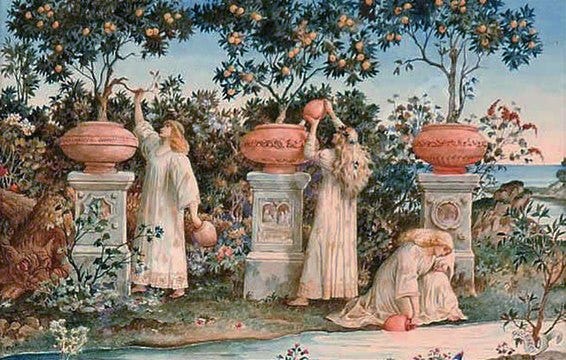
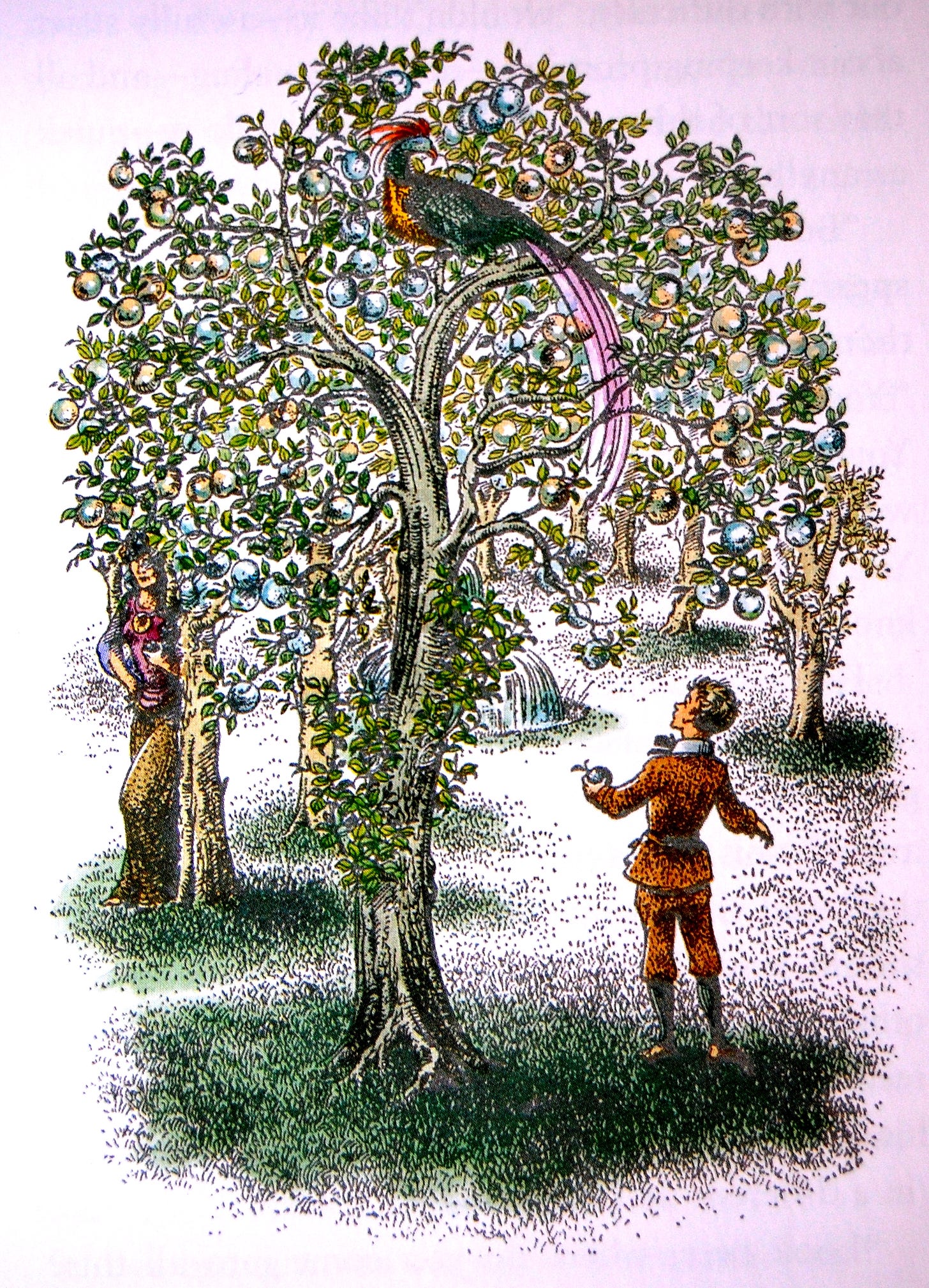
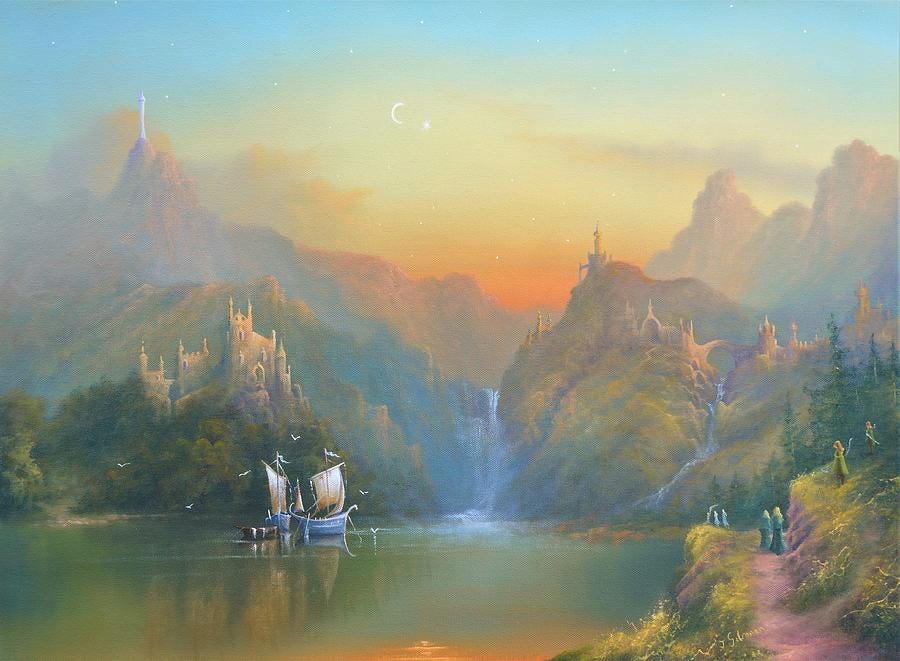

Interesting read. Thank you.
Thank you for the insightful article. Subscribed!